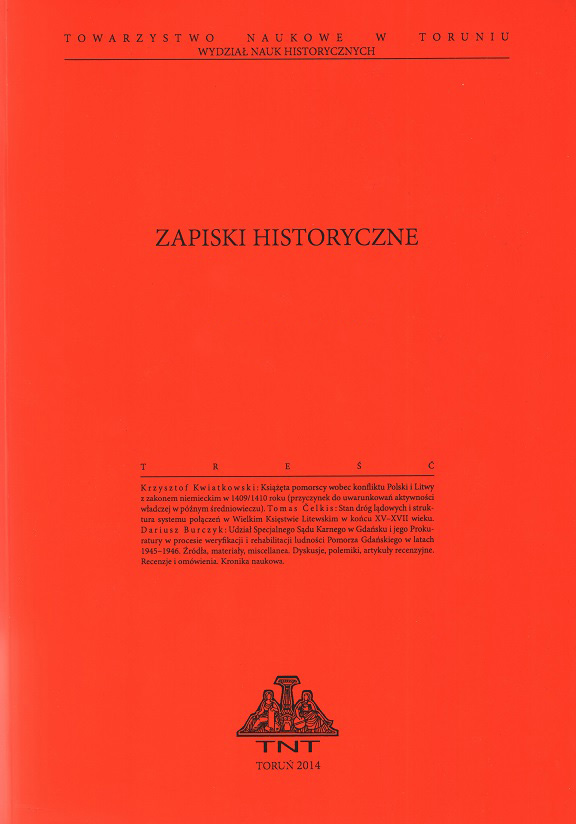
We kindly inform you that, as long as the subject affiliation of our 300.000+ articles is in progress, you might get unsufficient or no results on your third level or second level search. In this case, please broaden your search criteria.

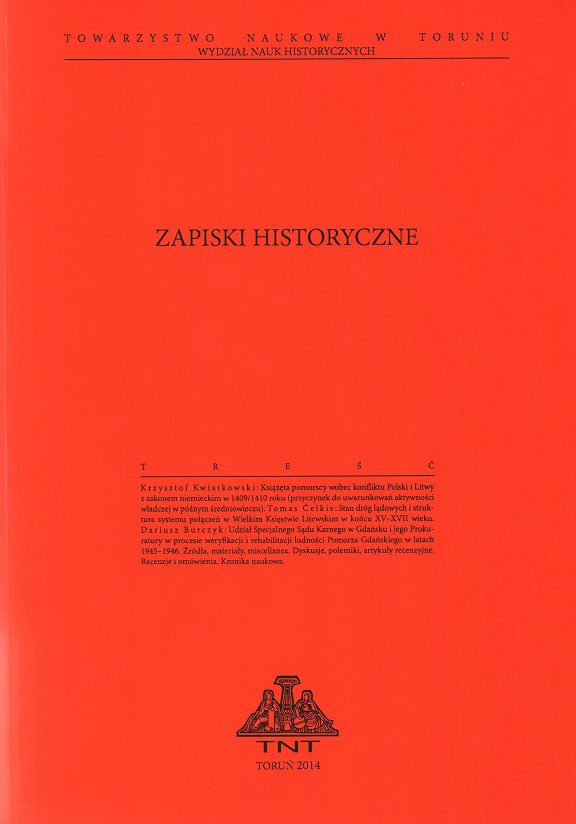
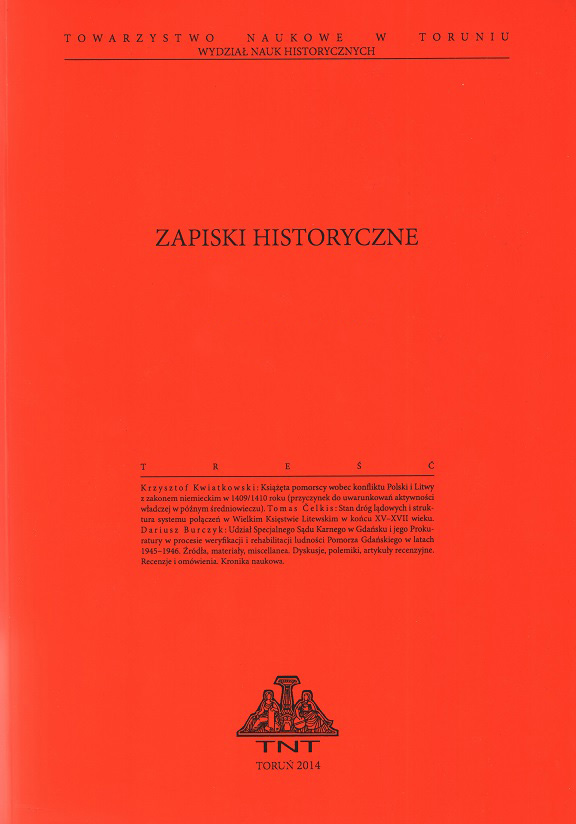
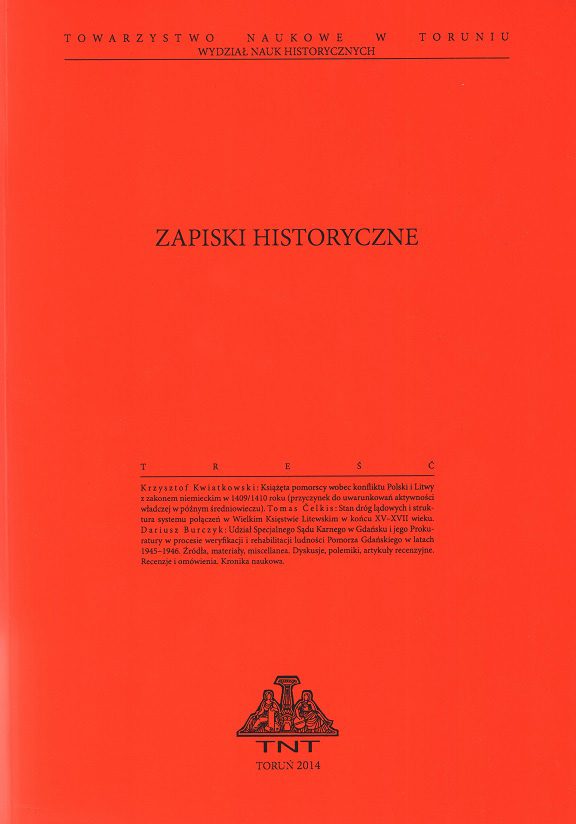
At the beginning of the German occupation in the territories incorporated into the Third Reich all the Polish orphanages and childcare centres became administered by the German authorities. It was in accordance with the incentives included in the book prepared by the Political-Racial Bureau in November 1939 titled The question of the treatment of the population from the former Polish territories from the racial-political point of view, which recommended that racially valuable children should be exempted from resettlements and should be brought up in the Reich in special educational centres which followed the model of the House of Orphans in Potsdam. On 9 September 1939 Wejherowo was taken over by German soldiers from the 207th Infantry Division of Tiedemann, the 32nd Regiment of Grenzwache von Bothmer, the SS Battalion – Heimwehr Danzig of Major von Rittberg and the 5th Cavalry Regiment of Diener. The Wejherowo land became part of the Reichsgau Danzig-West Prussia. The occupying forces took over the buildings of the pre-war Centre for Social Care and the Primary School for the Deaf and Mute in Wejherowo, which are now situated at 279 Jana Sobieskiego street (at that time: Adolf-Hitler-Strasse). The buildings served as accommodation for the military units. Buildings no. 2 and no.4 along with the farm were not utilised. The German administration set up the Educational Centre called “Erziehungsanstalt Neustadt” for Polish and German boys aged 4 to 16 in the dormitory and school buildings. Polish children came from the territories of the former Pomeranian province – Bydgoszcz, Grudziądz, Toruń, Gdynia, Starogard Gdański and Kartuzy. The number of children of Polish nationality who stayed in the educational centre in Wejherowo amounted to 101 boys 9 according to the data of 31 April 1940). During their stay in the centre in Wejherowo boys were supervised by German teachers or local Kashubians. From time to time children were sent to nearby farms to help in agricultural works. In 1943 the decision was made to liquidate the centre gradually. Thirtyone boys were transported to the camp for children in Łodź in Przemysłowa street. During the evacuation of the centre some children escaped to their family homes. The remaining children were placed by the Polish authorities in childcare centres as victims of the war. Once their identity had been established, they were sent to their family homes. Orphans were placed in orphanages and childcare centres.
More...
In this article I tried to demonstrate the different interpretations of fascism in the Hungarian Latin Americanist literature. For this purpose I analyzed texts published by historians and political scientists. The topic normally plays a marginal role in the context of this region, but was relatively popular in the 1970’s and the 1980’s. Most of the examined publications was made in this period. The historical works – because of the distance in time from the subject of analysis always had an objective attitude towards the question. The „spirit of age” had more influence on the political science and used the term fascism (or neofascism) for the rigth-wing military regimes of the 1970’s and 1980’s as well which now described mostly as conservative-modernizator dictatorship.
More...
Since 1921 the Hungarian Social Democratic press has written about events in Italian domestic politics. The first news came of street fighting. When the fascism came to pwer in 1922 the social democratic press has informed their readers about the fascist politics. The authors analyzed Mussolini’s personality, later fascism was compared to Nazism. The reports dealing with the social basis of the system, its economic plans and the fascist theories are very interesting. This study presents the views of Hungarian social democracy on Italian fascism.
More...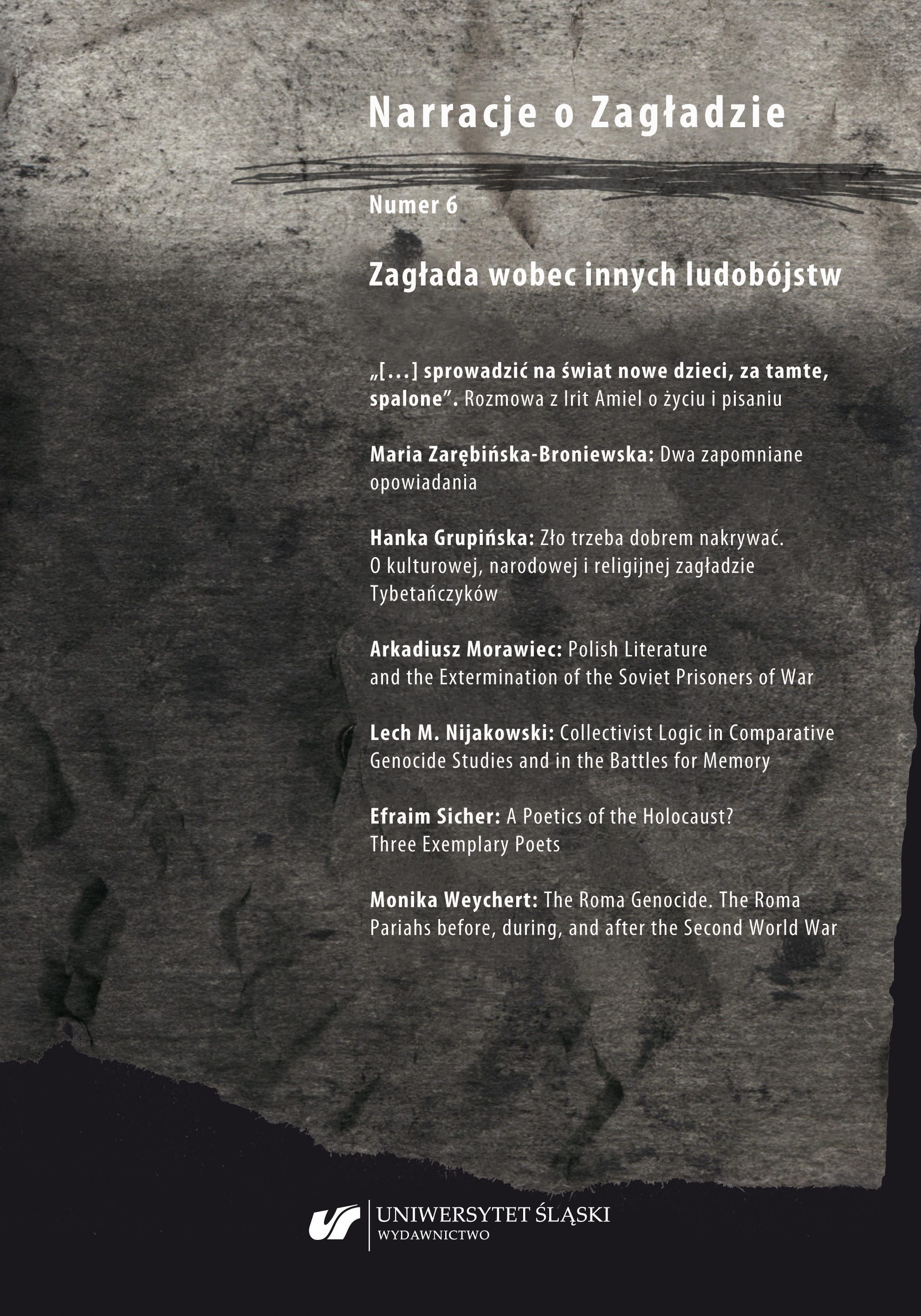
The article describes Jehovah’s Witnesses women as one of less remembered groups among victims of the Nazi regime. What is pointed out, first of all, is the state of research on their history, especially pertaining to their camp experience, Western literature on the subject and a negligible number of Polish research works devoted to the topic in question, and also some methodological dilemmas related to researching it. The author presents the circumstances of German Jehovah’s Witnesses after Hitler’s seizure of power, their subsequent persecutions, and also – reconstructed on the basis of documents, witnesses reports, and the members of persecuted group themselves – the fate of female followers of this religion (“the purple triangles”) in concentration camps. The author’s main points of focus are, described by witnesses/beholders/onlookers of the events, acts and attitudes of “the purple triangles” marked by strong spirituality, at the same time unbreakable/intransigent in their defiance of/against violence and the authorities’ orders. (Everybody knew that Jehovah’s Witnesses could have basically “sign off” from the camp by putting their signature at the bottom of a declaration that they would renounce their faith and cease to practise their religion.) Such a defiance may be better understood, the author claims, by interpreting it in the light of the anthropological concept of emotional communities.
More...
The article is devoted to the analysis of testimonies, accounts, memoirs, ego-documents by concentration camp prisoners of Auschwitz, Majdanek, Stutthof, and Gross-Rosen. The source material kept in the said KLs’ archives contains a multitude of individual histories of survivors of the genocide, either described in detail or concisely noted down. What the author focuses on is the variety of those testimonies to suffering and tragedy of people incarcerated in concentration camps. At the same time, she observes that for the former prisoners, decades after leaving the camps, the Shoah and hell are synonymous with genocide. The most common terms used by them to describe genocide are: mass extermination, the Holocaust, Annihilation, hell, the Shoah, hideous violence, total annihilation – both physical and moral.
More...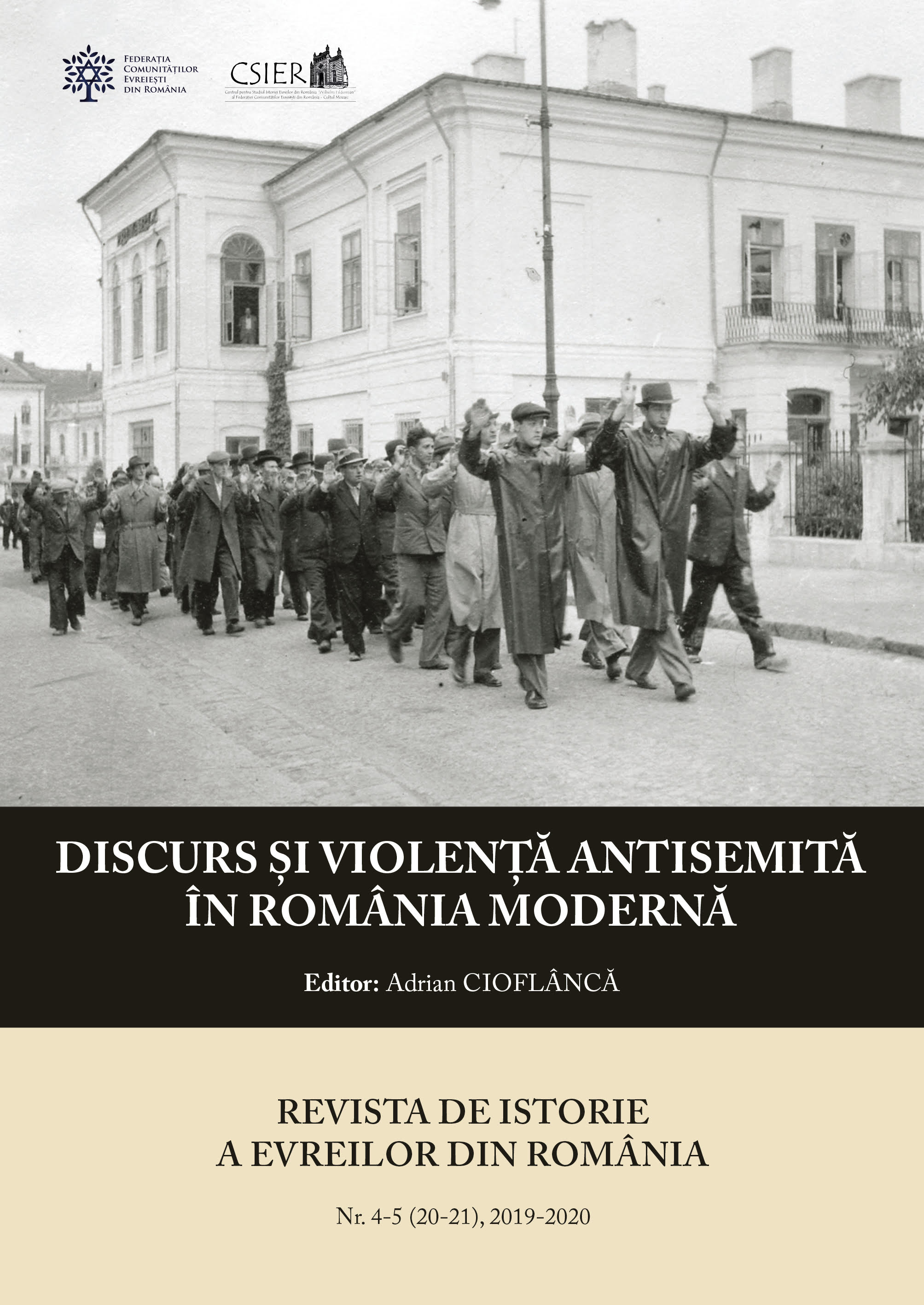
The article discusses the origin of the cliché according to which, during the evacuation of the Romanian troops from Bessarabia and Northern Bukovina, in June-July 1940, Jews had perpetrated violent acts against the Romanians, out of hatred. Firstly, the article examines which part of the local population was involved in actions for the benefit of the USSR, against Romania, and who was purely opportunistic. This analysis is based on testimonies which suggest that most ethnic groups, including Jews, Ukrainians, Russians, Bulgarians, Gagauzes, and Bessarabian Romanians, initiated or participated in such actions, although Jews did play a more important part. The testimonies also indicate that the Jews in question belonged in particular to the disadvantaged social classes and/or to the younger generation. Secondly, the article provides several possible explanations for these actions. It analyses, among others, the impact of an anti-Semitic regulation dated June 26, 1940. Thirdly, the article argues that the above-mentioned cliché stemmed from a racially-biased article published on June 29, 1940 in the Italian newspaper Il Messagero and later quoted by the official newspaper România.
More...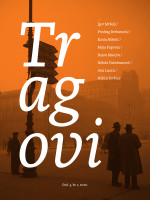
The review of: Vinko Tadić: Pukovnik s violinom: Svijet Miodraga Bjelića (1920. — 2017.), Požega: Biro-tisak i Povijesno društvo Požega, 2019., 103. str.
More...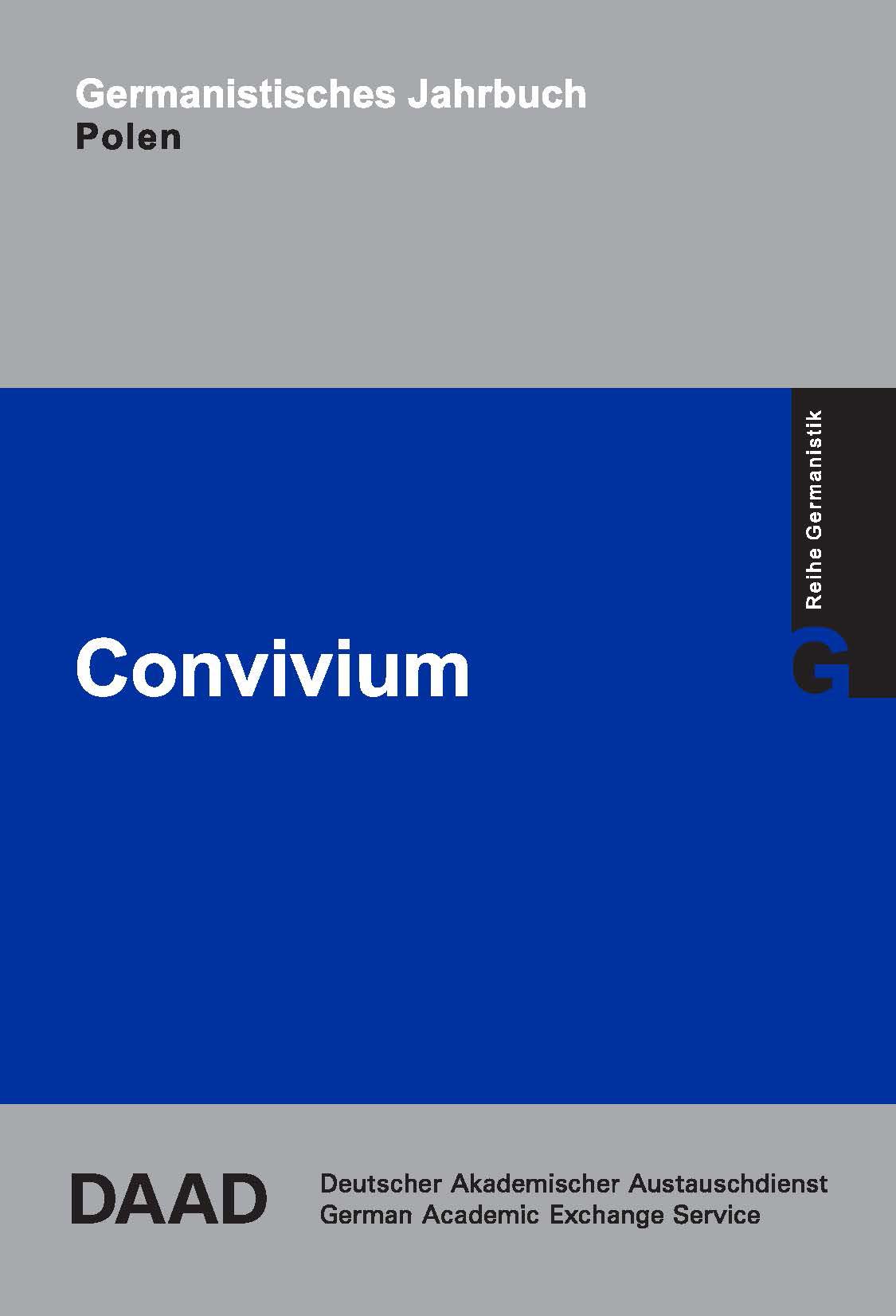
This article tries to compare books read at schools in Germany and in Poland concerning Second World War und Holocaust. As there isn’t a fixed canon of books for German schools, an inquiry became necessary to find out the ‚secret‘ canon. In Poland there are not only established compulsory books but also textbooks are used in preparation to matriculation. An investigation of three Polish textbooks and the canonical authors (Tadeusz Borowski, Czesław Miłosz, Hanna Krall) is in the centre of this article.
More...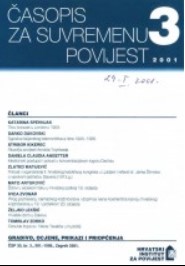
During the Third Reich many German physicians supported the Nazis. Physicians took part in torture and killing of the enemies of the Nazi regime. Killing of the mentally disabled persons was a common practice. Concentration camps internees were used for medical experiments and were often tortured to death in process. The aim of the experiments was to improve the medical treatment of the German soldiers and to help them survive at the battlefield. But the results of the experiments were either well-known or totally useless. In the concentration camps ill or injured internees were not medically treated. Either they recovered on their own or they died. Hygienic conditions in the camps were deplorable. Water was scarce and unclean, lice and fleas infested the crowded barracks and thousands of people died of typhus or other infections without receiving any medical help. No matter, how tired, weak or ill internees were, they had to hide it they wanted to survive.
More...
Review of: Krešimir Čokolić - HIJACINT BOŠKOVIĆ: FILOZOFSKI IZVORI FAŠIZMA I NACIONALNOG SOCIJALIZMA, Dom i svijet, Zagreb 2000., 104 str.
More...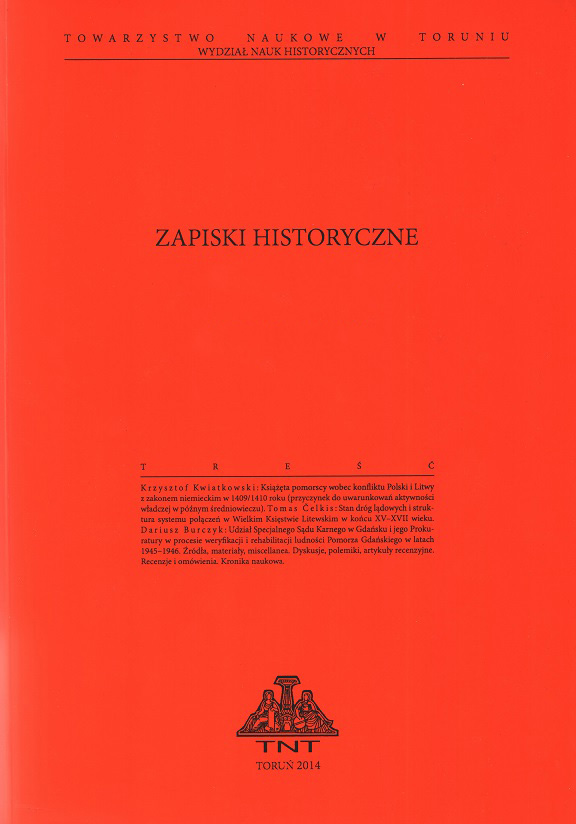
The article is an attempt at addressing the question of the Prussian State’s involvement in the economy during the interwar period, as it was first one of the constituent states of the Weimar Republic and then a part of the Third Reich. After the First World War, the economic and social problems of Prussia resulted from the general difficult situation of Germany. However, Prussia in particular suffered serious territorial losses in the east of the country. Many petitions and requests demanding the state’s active involvement in solving economic and socio-demographic problems were addressed to the Prussian government. A very important premise for this involvement was the political motivation and willingness to solve the ongoing problems indicated by the economic sector and local administration. The investment of the state’s financial resources into the Port of Szczecin and the establishment of the Port Community of Szczecin was conditioned, on the one hand, by the failure of negotiations with the City-State of Hamburg to establish a similar port community. On the other hand, it stressed the importance that the Port of Szczecin acquired during the First World War. As a result of the Prussian State’s involvement, investments of at least several million marks worth were made in the port. The change in the form of cooperation between the state and the City of Szczecin in terms of managing the port, which took place in 1929, led to the creation of the Port Company in Szczecin. Nevertheless, it should be noted that the amount of funds that the Prussian State allocated to the Port of Szczecin was limited. During the Nazi period, some more costly investment projects in the Port of Szczecin were drafted but they were never implemented.
More...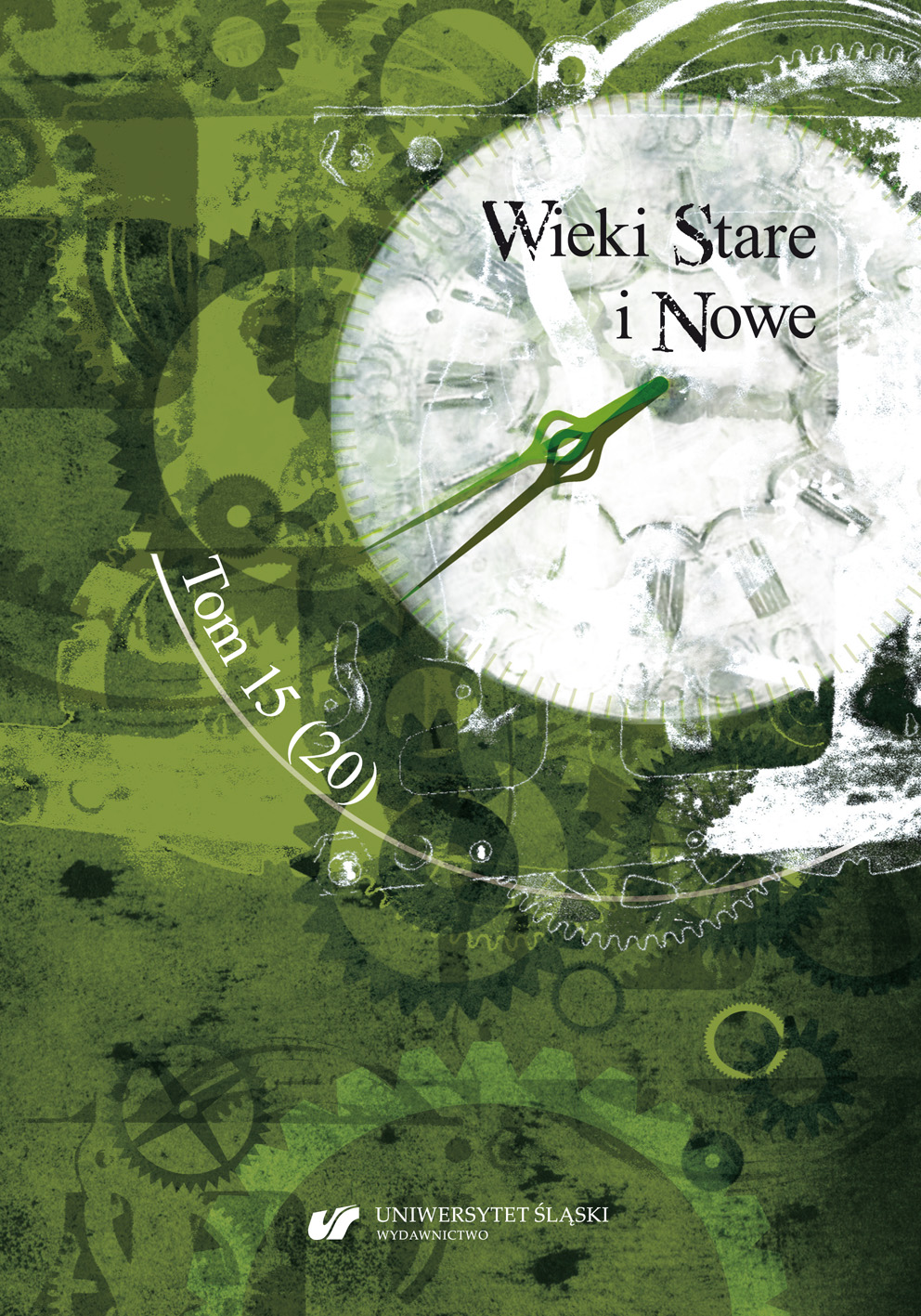
Eugeniusz Adamczyk, an activist of the Home Army (AK), pseudonym “Wiktor,” was undoubtedly a hero of the Polish counterintelligence war meted out against Gestapo. He was in possession of uncommon skills that made him tailored for this kind of work. Born three years prior to the First World War in the village of Irządze, when he sought his first job, he wound up joining the police. At the moment of the outbreak of the Second World War, he had been on duty in the Tarnopol voivodeship. Having reached the General Government, he started to take active part in the operations of the Armed Independence Underground. Instantly after having been sworn in as a member of ZWZ (Union of Armed Struggle), following the order from the union’s leadership, he joined the ranks of Gestapo, the Nazi-Germany secret police. While stationed at a Gestapo precinct in Jędrzejów, he was able to aid in various ways those maltreated, tortured and persecuted by Hitlerites, those threatened to be arrested, resettled, or sent to the Reich as “labourers.” In the eyes of Poles oblivious to his mission, he was often considered a traitor. In recognition of his services, the Home Army leadership appointed him as a head of its 2nd Department of Intelligence and Counterintelligence in the Jędrzejów Precinct. Yet, a fate filled with hardships awaited him after the war. Twice he was arrested in the 1940s and he had to endure the worst kind of tortures inflicted upon him by the (communist) Security Service. Not until the amnesty of the year 1956 was he allowed to lead relatively normal life. He then became professionally involved at the Silesian University of Technology (Politechnika Śląska). However, he was eventually arrested again for an attempt to publish his memoirs detailing the former work for the Home Army, and for sending death sentences to prominent communist leaders.
More...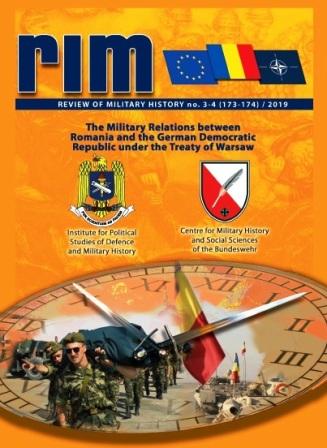
What happened in the summer of 1940 was not a tragedy – simply because this metaphor lacks the much needed precision when discussing Romania’s borders. A tragedy involves surprises, plot twists, unexpected interventions of fate itself. With one notable exception (the rapid capitulation of France), the facts behind our collapse in 1940 should not have been surprising in the least, many of them having accumulated for years and even decades. Indeed, the summer of 1940 represented the humiliation of the Romanian state and the collective bankruptcy of the political and military elite ruling the country.
More...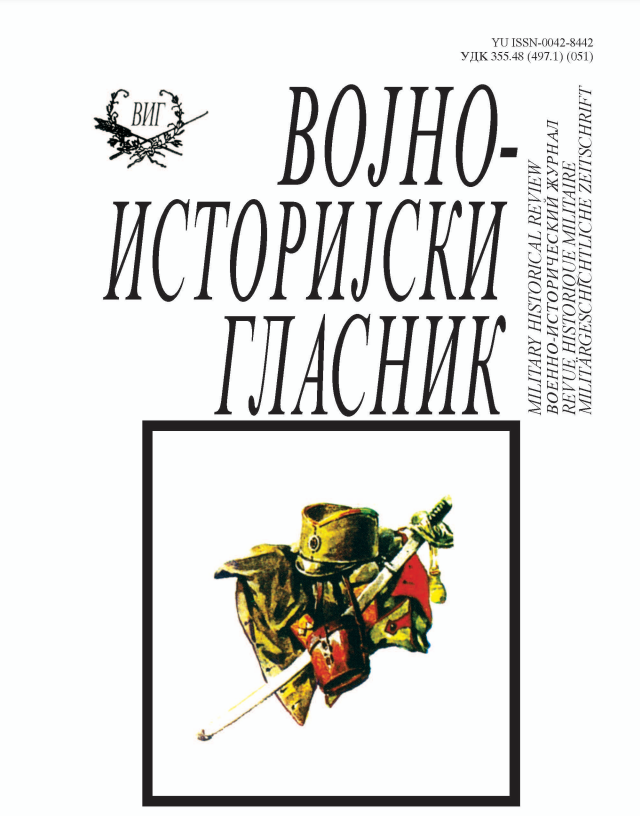
During the 1950s and 1960s it was common to portray Yugoslav policy after 1935 as pro German or pro Axes between the 1939 and March 27 1941. However, there was no a real ground for the such claims in the Yugoslav, French, American, Italian or German archives. Yugoslav military and Serbian public opinion were still in favor of its traditional Allies. Even Prime Minister Milan Stojadinović followed the British policy of appeasement with Germany and did his best to improve Yugoslav military capabilities as the factor of deterrent. French and British decline, and their attitude during the Rhineland crisis 1936 and Munich 1938 were warning sign for all their Eastern Allies and USSR. Historians Alfredo Breccia and Jacob B. Hoptner, have already cast more light on the nature of Yugoslav neutrality. They both come to conclusion that neutrality declared on September 2, 1939, indeed had not profound proGerman or pro-Italian attitude. This was sort of accommodation in order to overcome immediate consequences of an foreign engagement while it did not stabilize inner political cohesion after Serbian-Croat agreement in August 1939 as well as was far from being ready in fulfilling the armament program and war preparations yet. The status of neutrality facilitated Yugoslavia to import armaments and war materials from Germany and „neutral” Italy, as well as to freely navigate its fleet and evade German naval blockade. Those facts and motives were well known to Western Allies. Besides, Yugoslavia established close and clandestine military cooperation with France. It helped supplying Poland in September. It also welcomed initiative of General Weygand for creation of new Balkan front in a foreseen future. In the capital Belgrade, French established „Military Post” staffed with 31 men. Yugoslav army sent special delegation attached to French Supreme Command. Yugoslavs also replaced less skillful military attaché Colonel Gerba with their former representative to France General Predić (ethnic Serb). Both sides frequently exchanged intelligence reports. Those of Colonel Vauhnik, Yugoslav military attaché in Berlin, were of the great importance and accuracy. The Germans revealed all these facts after they captured filles of the French Supreme Command in Charité after the Armistice in June 1940. After the fall of France, Yugoslavia has turned to Britain but also to USSR and USA for supplies and assistance. However, its strategic position was aggravated daily. Germans enrolled in Romania, Italians were at its borders and on the see. When during the March 1941 Germans finally entered Bulgaria thus increasing pressure on Yugoslav leadership, forcing it gave up any further resistance and comply with demand to join the Axes on March 25. Only two days later a group of army officers staged a coup d’état and overthrew Prince Regent and acting Government. It was direct move towards the Allies but for the price. When the Axis responded with combined invasion. Yugoslavia collapsed after less than two weeks of resistance.. Meanwhile, Greece acted in the same way of bogus neutrality. However, impatient Mussolini invaded Greece from Albania on October 28 1940.. In that moment he acted without German consent. In preparatory propaganda for that endeavor Mussolini misused information that Germans previously captured in Charité. Yugoslav Royal House was in close ties with the Greek one, so Prince Regent Paul did as much as he could under the present circumstances to aid an old Greek ally. He ensured his counterparts that Yugoslavia would not allow Italians to bypass Greek right flank using Yugoslav territory. In spite of Italian bombardment of Bitolj (Monastir) Yugoslavia did not change its firm attitude. By using excuse of neutrality, it resisted repeated requests for letting Italians transit even for the supplies of food. In response Italy immediately halted shipments of armament, vehicles and aircrafts destinated to Yugoslavia. After tough negotiations Yugoslavia allowed them to pass with civilian supplies and red cross assistance for wounded in exchange for opening imortt of the vital goods from Italy, but not before Greeks ended up successfully their counteroffensive and forced Italians to entrench themselves.. Yugoslavia assisted its Greek ally with the considerable amount of ammunition especially for the 75 mm Schneider and 20 mm antiaircraft guns. In addition, Yugoslavia sent air bombs (200 tons), hand grenades (200.000 pieces), horses, several airplanes of older type, food and medical supplies. The Greek King personally expressed gratitude to Prince Paul for all those efforts in helping Greece in the moment of need. During the German spring campaign in 1941 Yugoslavia was of a little help for Greece since its southern front in Macedonia collapsed very quickly and Salonika port was overrun by the invaders. The part of Yugoslav army fled to Greece and withdrew southward along with the British and Greek forces but ended up in German captivity as well.
More...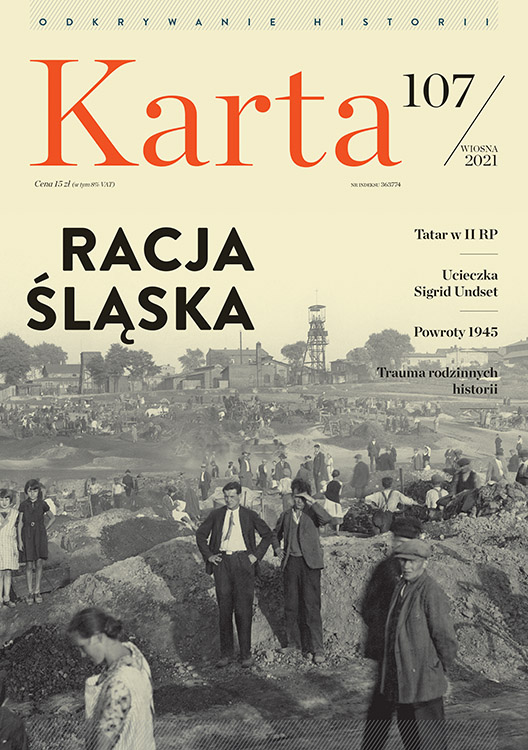
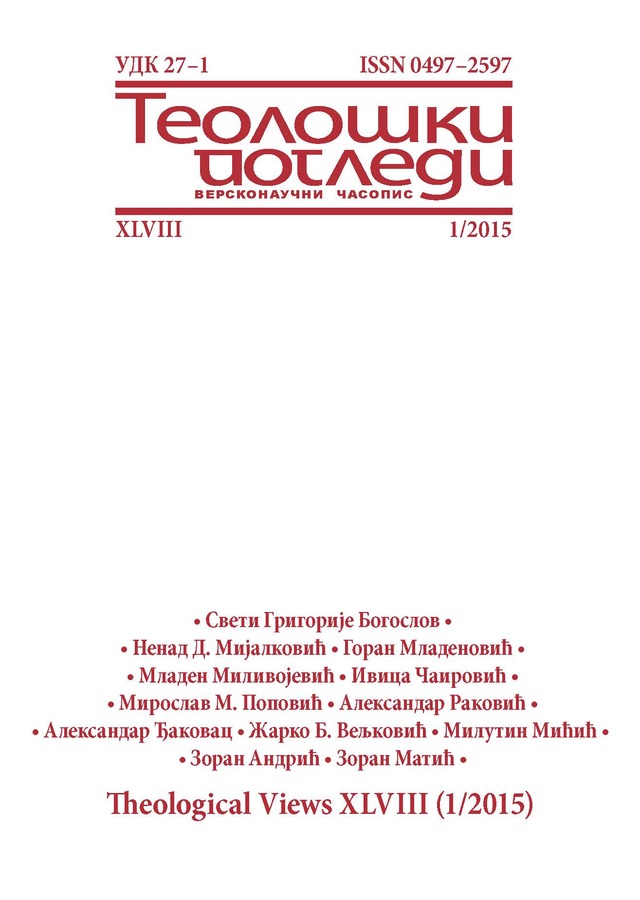
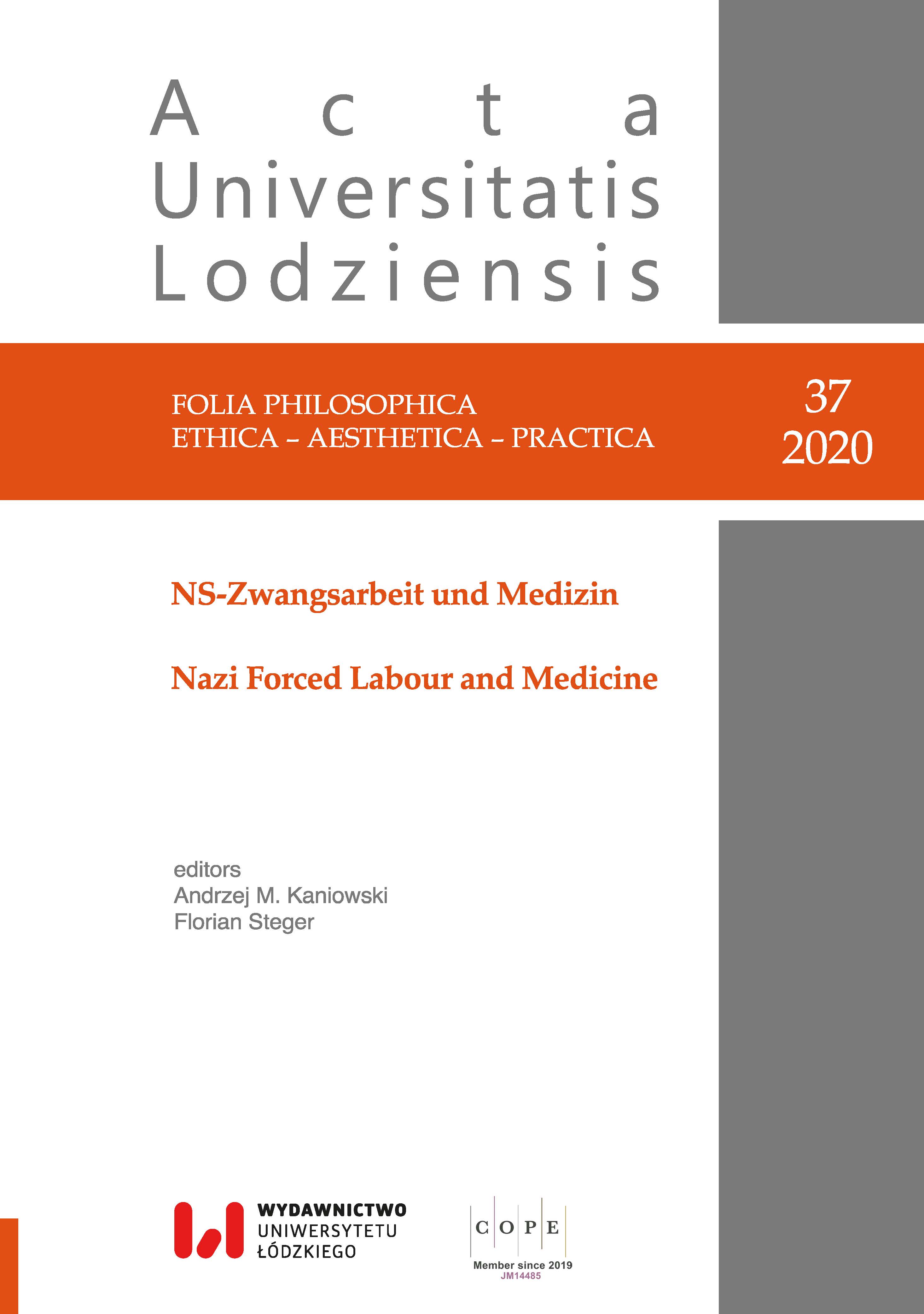
Polish and Soviet forced laborers labelled in the Nazi ideology as “Untermenschen” were the worst treated nationalities among those employed by the Third Reich and its war machine. The treatment of Poles and Russians was entirely subordinated to the racial ideology with its profound impact on the law and social and economic conditions. This ideology ordered, on the one hand, the precise separation of Polish and Soviet forced laborers from German citizens, and on the other, the optimal organization of the forced labor which meant its entire subordination to the German state and its industry. The result of such an organization was an entirely repressive, even beastly system, with miserable living conditions and most inferior medical care. Both living conditions and medical treatment show, as in a lens, the main objectives of the Nazi state and its dehumanized character. Bielefeld Stadt und Land, located in north-east Westphalia, due to its mixed industrial (mostly arms industry) and agricultural character, constitutes a representative example of the brutal and repressive system of the forced labor industry reflecting the entire spectrum of problems related to it. The analysis of medical care in the Bielefeld area illustrates the differences between the two groups of Polish forced laborers. The first consists of people in the industry sector, while the second is a mixed category including workers employed in agriculture, the service sector and domestic help. As far as the first group is concerned, the status of the workers was to some extent standardized. Most of them were accommodated in the camps and subjected to brutal and systematic exploitation, which was calculated to maximize production effects, and at the same time, to destroy individuals through the adverse conditions of accommodation and minimal medical care. This inhumane treatment was a result of racist ideology. Status, employment conditions and medical care in the second group were much more diverse. We are dealing here with the entire spectrum, often of extremely different experiences of forced laborers with medical personnel and the diverse attitudes of the employers. The fundamental problem of the limited research materials on the discussed issues are deficiencies of the source base. In particular this concerns the limited recollections of the forced laborers themselves. Currently, it is virtually impossible to increase the source dossier, as witnesses of these events are mostly no longer available.
More...